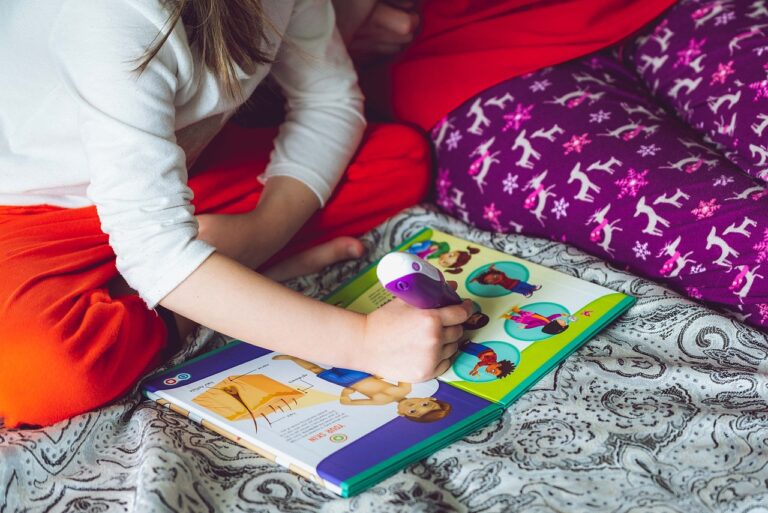Supporting Students with Dyslexia: Effective Instructional Approaches
Dyslexia is a common learning disability that affects the way individuals process language. It is characterized by difficulties in reading, writing, spelling, and sometimes speaking. Students with dyslexia often face challenges in the traditional classroom setting, but with the right support and instructional approaches, they can thrive academically.
Understanding Dyslexia
Dyslexia is a neurobiological condition that affects the way the brain processes written and spoken language. It is not related to intelligence, and individuals with dyslexia often have average to above-average intelligence. Dyslexia is a lifelong condition that can impact various aspects of a person’s life, including education, employment, and social relationships.
Identifying Students with Dyslexia
It is essential to identify students with dyslexia early on to provide them with the appropriate support and accommodations. Some common signs of dyslexia include difficulty with phonemic awareness, decoding words, spelling, and reading fluency. Teachers and parents should be aware of these signs and seek a formal evaluation if they suspect a student has dyslexia.
Effective Instructional Approaches
When it comes to supporting students with dyslexia, there are several effective instructional approaches that educators can implement in the classroom. These approaches are based on research and best practices in the field of special education and literacy instruction. Some of the key instructional approaches for supporting students with dyslexia include:
1. Multisensory Instruction
One of the most effective instructional approaches for students with dyslexia is multisensory instruction. This approach involves engaging multiple senses, such as sight, sound, and touch, to help students learn and retain information. Multisensory instruction can include activities such as tracing letters in sand, using colored overlays for reading, and practicing phonemic awareness through speech and movement.
2. Structured Literacy Instruction
Structured literacy instruction is a systematic and explicit approach to teaching reading and spelling skills. This approach focuses on teaching students the underlying structure of the English language, including phonemes, graphemes, and morphemes. By breaking down language into its component parts and teaching it in a structured way, students with dyslexia can improve their reading and spelling abilities.
3. Phonological Awareness Training
Phonological awareness is the ability to recognize and manipulate the sounds of language. Students with dyslexia often have difficulty with phonological awareness, which can impact their reading and spelling skills. Phonological awareness training can help students develop these skills through activities such as rhyming, segmenting sounds, and blending sounds to form words.
4. Assistive Technology
Assistive technology tools can help students with dyslexia access and engage with curriculum materials more effectively. These tools can include speech-to-text software, audiobooks, text-to-speech technology, and graphic organizers. By providing students with access to assistive technology, educators can support their learning and help them overcome barriers related to reading and writing.
5. Positive Behavior Support
Students with dyslexia may experience frustration, anxiety, and low self-esteem due to their challenges with reading and writing. Positive behavior support strategies can help address these social and emotional needs by creating a supportive and encouraging classroom environment. Educators can use praise, positive reinforcement, and goal-setting to motivate students with dyslexia and build their confidence.
6. Individualized Instruction and Accommodations
It is essential for educators to provide students with dyslexia with individualized instruction and accommodations to meet their unique learning needs. This can include modifying assignments, providing extra time for tasks, offering alternative assessments, and using visual supports. By tailoring instruction to the specific needs of each student, educators can help them succeed academically.
FAQs
Q: How common is dyslexia?
A: Dyslexia is estimated to affect 5-10% of the population, making it one of the most common learning disabilities. It is more prevalent in males than females, with a ratio of about 3:1.
Q: Can dyslexia be cured?
A: Dyslexia is a lifelong condition, but with the right support and instructional approaches, individuals with dyslexia can learn to read and write effectively. Early identification and intervention are key to helping individuals with dyslexia succeed academically.
Q: What are some common myths about dyslexia?
A: Some common myths about dyslexia include that it is a sign of low intelligence, that individuals with dyslexia see letters backward or reversed, and that it can be outgrown. In reality, dyslexia is a neurological condition that affects language processing and can impact various aspects of a person’s life.
Conclusion
Supporting students with dyslexia requires a combination of effective instructional approaches, individualized support, and a positive learning environment. By implementing strategies such as multisensory instruction, structured literacy instruction, and phonological awareness training, educators can help students with dyslexia improve their reading and writing skills. With the right support, students with dyslexia can achieve academic success and reach their full potential.







